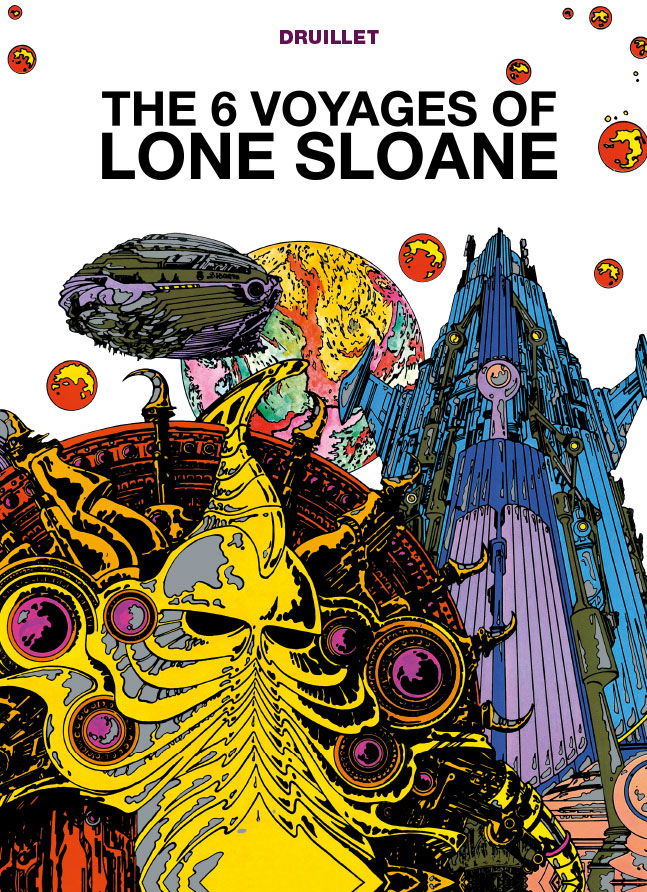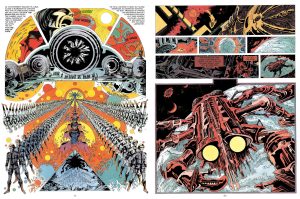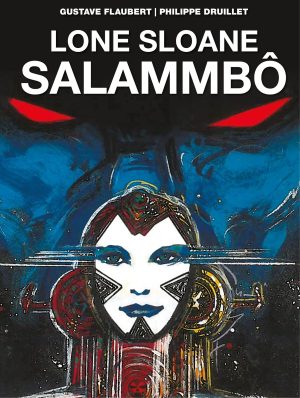Review by Ian Keogh
In terms of sheer conceptual imagination when it comes to heroic science fiction in comics, Philippe Druillet is perhaps the only creator who approaches Jack Kirby’s creativity. The cover of this collection alone almost makes the case, and Lone Sloane is Druillet’s best known character.
Because both Druillet and Lone Sloane became known to American audiences when Heavy Metal began reprinting strips from Metal Hurlant, it’s often assumed the character originated in the latter, which isn’t the case. Lone Sloane dates back to 1966, although not in quite the same mind-expanding format. The character is a vessel for Druillet’s visual imagination, a sort of focal point for whatever fantastic adventure he wants to play out, but not fixed, as his abilities and purpose morph. Sometimes Lone Sloane is the observer, sometimes the instigator, sometimes the judge, and he could be seen as a far wilder version of the Silver Surfer.
As the title promises, this collection supplies six adventures originally produced for French magazines in 1970 and 1971, and one can only imagine how far ahead of the times they were then, as the imagery is still eye-opening wonder and like little seen in comics since. Despite being influential it’s so individual it’s impossible to imitate successfully, and one hell of a lot of work for anyone who wants to try. Druillet approaches comics illustratively, preferring large pictures accompanied by blocks of text rather than following a character from panel to panel, although it takes some time for him to fully commit to the technique. The stories where he’s still attempting to cage his imagination with more traditional comics panels are compromised and flawed, although Kevin O’Neill’s later Nemesis the Warlock manages the miracle of fusing such imagination with standard storytelling.
To give a flavour of the six voyages, ‘Rose’ supplies the most accessible story, with Lone Sloane landing on a junkyard needing to cobble something together to escape the planet. He’s right to be suspicious of the place’s guardian, and from that scenario Druillet weaves a story of killer robots held at bay by musical notes. It’s told almost traditionally, but is still like nothing you’ll ever have read.
Druillet’s art defies simple categorisation. It’s obsessively detailed in the manner of fellow French artist Jean-Claude Gal, but whereas Gal strived for absolute realism, Druillet’s images construct the impossible rivet by rivet. Yet it’s not only technological wonders he supplies, but impossible beings, sometimes in their hundreds to a page, and amazing statuary inspired by Eastern and South American designs. When he hits his stride pages are built around a single magnificent image.
If you don’t look to the stories for sense, and just soak in the ideas and the illustrative brilliance, The 6 Voyages will still amaze, but anyone wanting a plot to their comics will be more satisfied with the next volume, Delirius. Both are also available with Gail as the Lone Sloane Boxed Set.






